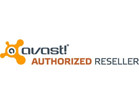Administering a SQL Database Infrastructure
| Fyrir hverja: | IT Professionals |
| Tæknin: | Microsoft SQL Server |
| Level: | 300 |
| Kennsluaðferð: | Hægt að velja um staðnám og/eða fjarkennslu í beinni |
| Lengd námskeiðs: | 5 dagar |
| Tungumál: | Kennsla er á íslensku, kennsluefni er á ensku |
This five-day instructor-led course provides students who administer and maintain SQL Server databases with the knowledge and skills to administer a SQL server database infrastructure. Additional it will be of use to individuals who develop applications that deliver content from SQL Server databases.
Fyrir hvern?/Inntökuskilyrði
The primary audience for this course is individuals who administer and maintain SQL Server databases. These individuals perform database administration and maintenance as their primary area of responsibility, or work in environments where databases play a key role in their primary job.
The secondary audiences for this course are individuals who develop applications that deliver content from SQL Server databases.
In addition to their professional experience, students who attend this training should already have the following technical knowledge:
· Basic knowledge of the Microsoft Windows operating system and its core functionality.
· Working knowledge of Transact-SQL.
· Working knowledge of relational databases.
· Some experience with database design.
Markmið
After completing this course, students will be able to:
- Authenticate and authorize users
- Assign server and database roles
- Authorize users to access resources
- Protect data with encryption and auditing
- Describe recovery models and backup strategies
- Backup SQL Server databases
- Restore SQL Server databases
- Automate database management
- Configure security for the SQL Server agent
- Manage alerts and notifications
- Managing SQL Server using PowerShell
- Trace access to SQL Server
- Monitor a SQL Server infrastructure
- Troubleshoot a SQL Server infrastructure
- Import and export data
Viðfangsefni
Module 1: Authenticating and Authorizing Users
This module covers SQL Server security models, logins, and users.
Module 2: Assigning Server and Database Roles
This module covers fixed server roles, user-defined server roles, fixed database roles, and user-defined database roles.
Module 3: Authorizing Users to Access Resources
This module covers permissions and the assignment of permissions.
Module 4: Protecting Data with Encryption and Auditing
This module covers SQL Server Audit.
Module 5: SQL Server Recovery Models
This module describes the concept of the transaction log and SQL Server recovery models. It also introduces the different backup strategies available with SQL Server.
Module 6: Backup of SQL Server Databases
This module describes SQL Server Backup and the backup types
Module 7: Restoring SQL Server Databases
This module describes the restoration of databases.
Module 8: Automating SQL Server Management
This module describes how to use SQL Server Agent for automation. It also explains the benefits of using master and target servers to centralize the administration of automation.
Module 9: Configuring Security for SQL Server Agent
This module describes the considerations for SQL Server Agent security, including proxy accounts and credentials.
Module 10: Monitoring SQL Server with Alerts and Notifications
This module covers the configuration of database mail, alerts and notifications.
Module 11: Introduction to Managing SQL Server by using PowerShell
This module introduces PowerShell for SQL Server.
Module 12: Tracing Access to SQL Server
This module describes how to use SQL Profiler and SQL Trace stored procedures to capture information about SQL Server. The module also describes how to use Distributed Replay to capture trace information from multiple servers, and how to monitor locking.
Module 13: Monitoring SQL Server
This module explains how to use Distributed Management Views to monitor SQL Server. It also describes configuration of data collection and the SQL Server Utility.
Module 14: Troubleshooting SQL Server
This module explains the SQL Server troubleshooting methodology and discusses the most common issues that can arise when working with SQL Server systems.
Module 15: Importing and Exporting Data
This module covers the use of the import/export wizards and explains how they relate to SSIS. The module also introduces BCP and BULK INSERT.
Nánar um markmið og viðfangsefni hér►
Námsmat
Ath að ekki eru lögð fyrir formleg próf í sjálfu námskeiðinu en mikil áhersla er lögð á að leiðbeinandi og þátttakendur fari sem oftast yfir það sem hefur áunnist til að ýta undir stöðugar framfarir.
Námsefni
Notað er vottað Microsoft MOC-kennsluefni og annað það efni sem Microsoft mælir með.
Annað
►Greiðslukjör: Auk greiðslu með Microsoft Training voucherum og staðgreiðslu bjóðum upp á VISA/MasterCard staðgreiðslulán til allt að 36 mánaða, greiðslu með Netgíró og Pei.
►Styrkir: Flest stéttarfélög og fagfélög styrkja félagsmenn sína myndarlega til náms hjá okkur. Kannaðu rétt þinn hjá þínu félagi. Þú getur líka haft samband okkur í síma 519-7550 eða sendu okkur línu á promennt@promennt.is og við aðstoðum þig við að finna út úr hvaða styrkjum þú átt rétt á.
►Fjarkennsla í beinni: Við minnum á að þetta námskeið er einnig hægt að taka í fjarkennslu í beinni útsendingu sem þýðir einfaldlega að þú getur tekið þátt í kennslustundinni algjörlega
►Vinsamlegast athugið að dagsetningar eru birtar með fyrirvara um að lágmarksþátttaka náist á námskeiðið.







